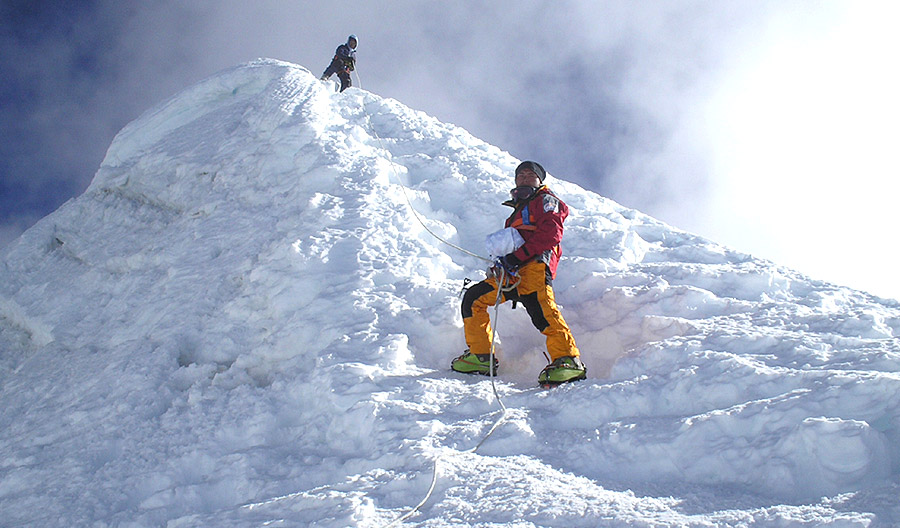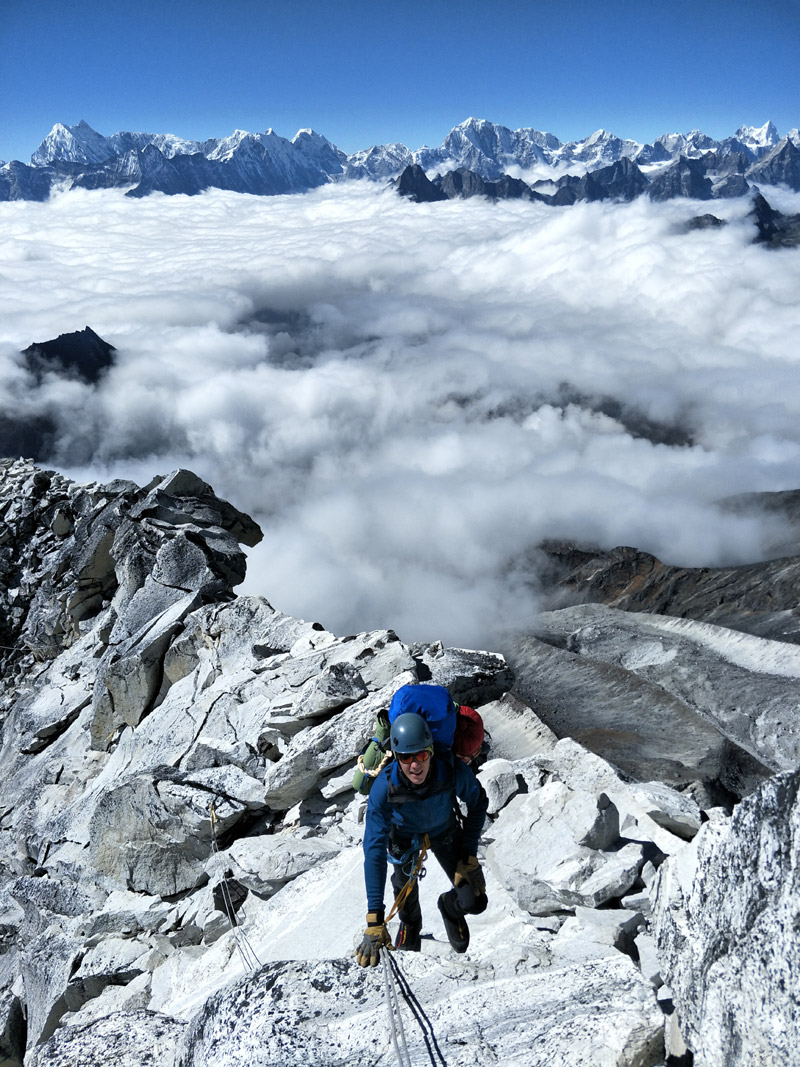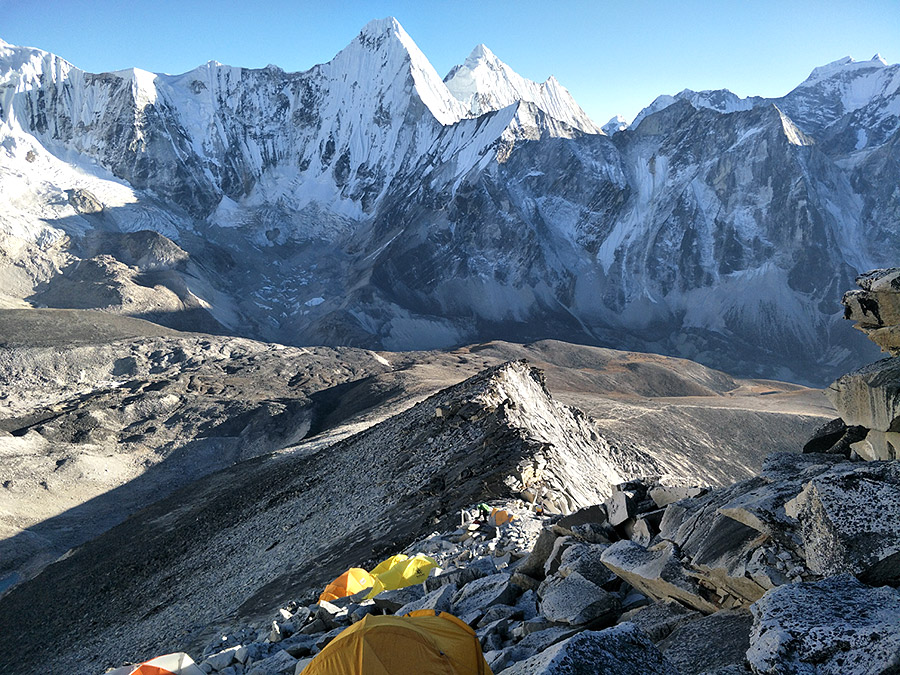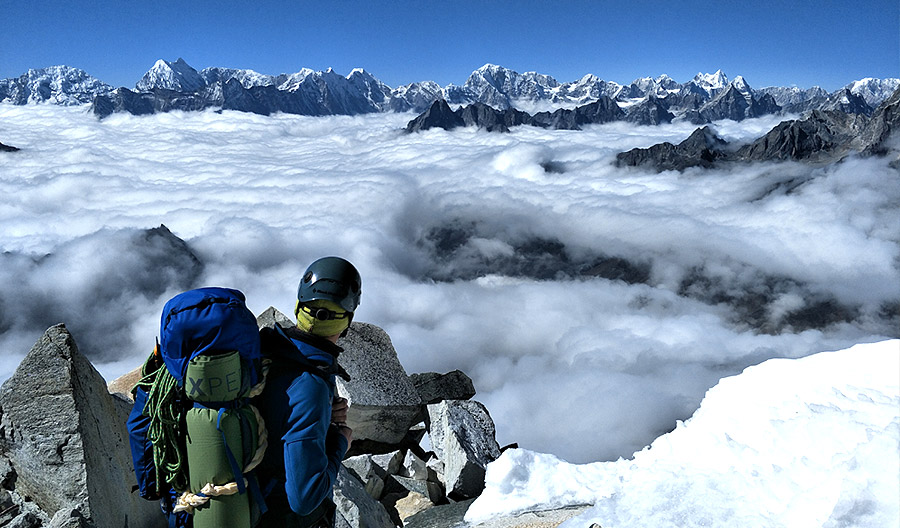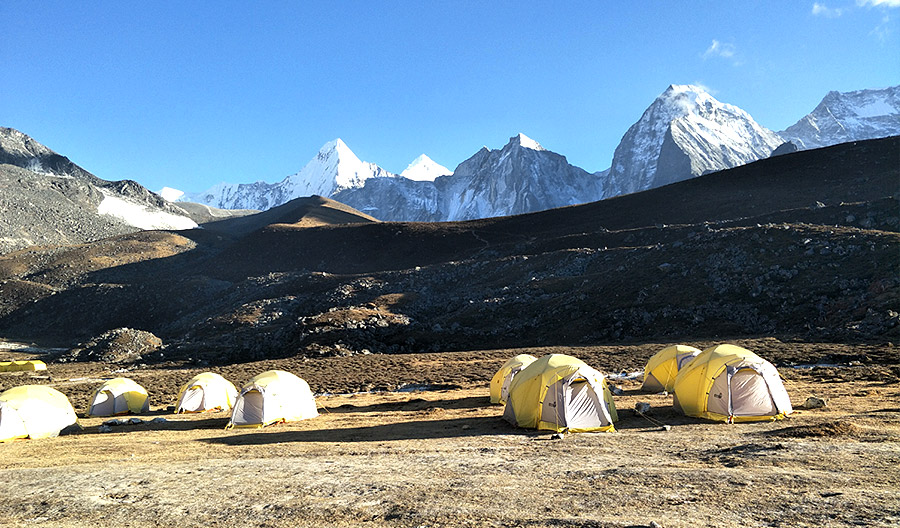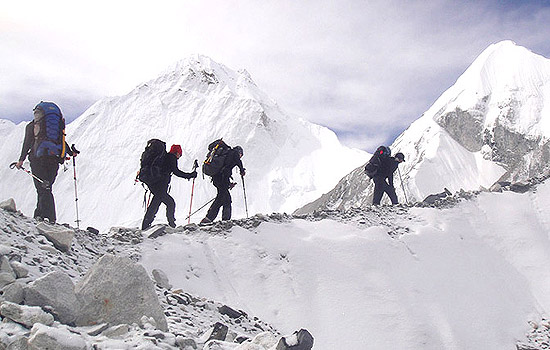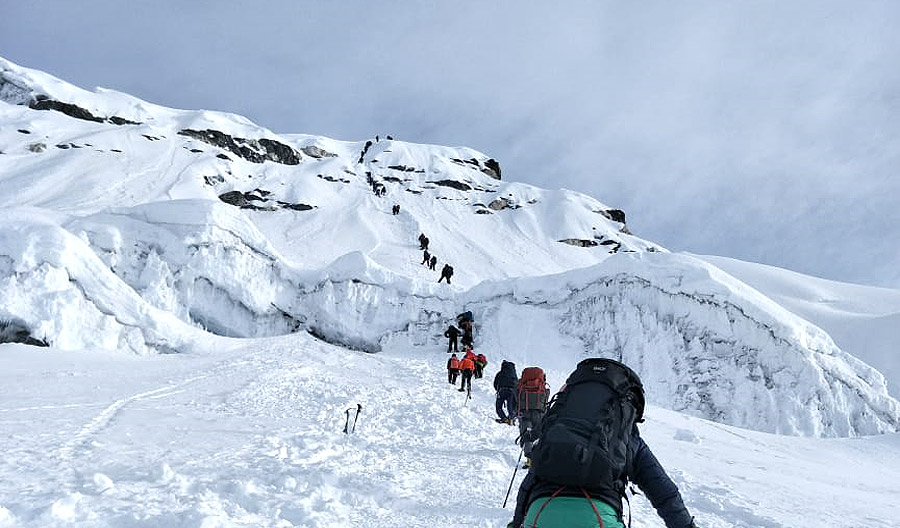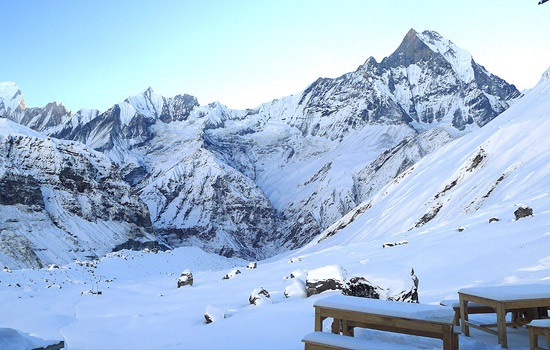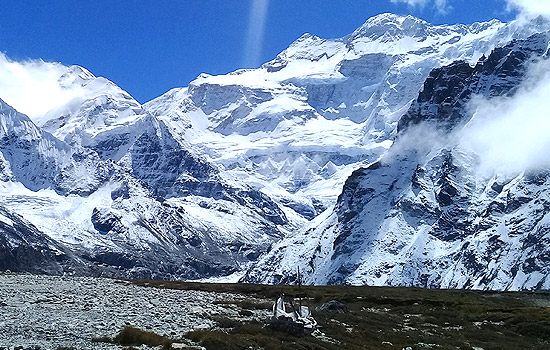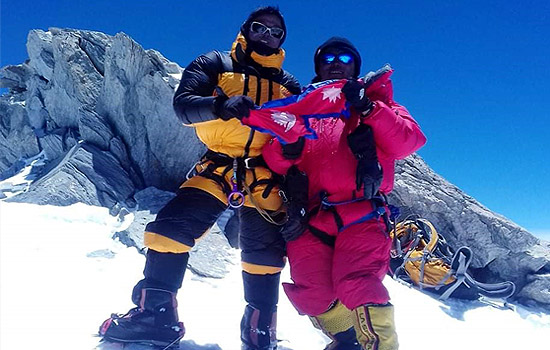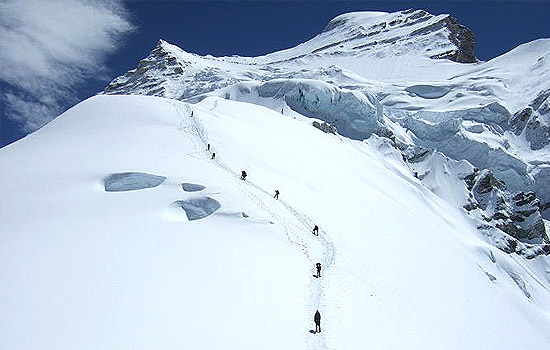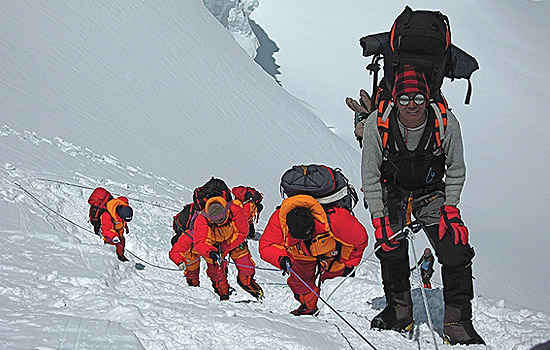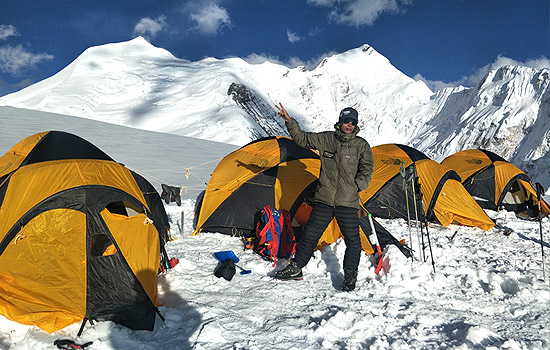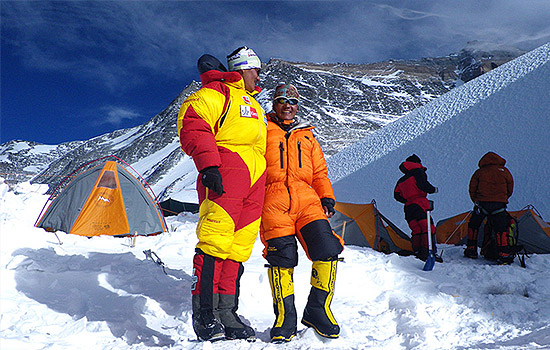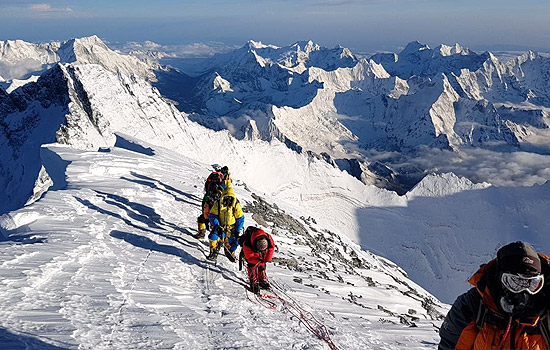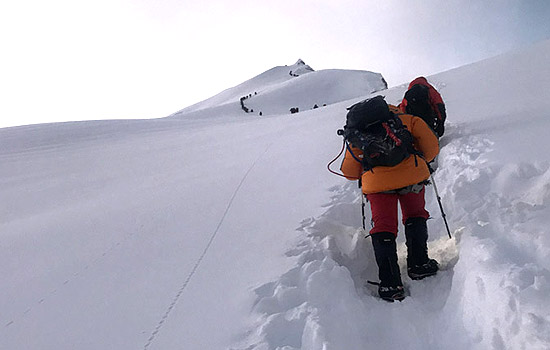a) Kathmandu
Pick-up and drop-off service
All airport pick-up and drop-off services by private vehicle
Hotel accommodation in Kathmandu
5 night hotel accommodation with breakfast at 3 star standards hotel
Sightseeing in Kathmandu
One full day city sightseeing in and around Kathmandu valley with private A/C vehicle and English speaking tour guide including entrance fees
Farewell Dinner
Farewell dinner in Kathmandu with live cultural performance at authentic Nepali restaurant on the last evening
Souvenir
b) Trekking and Climbing
Flight Tickets
Flight tickets from Kathmandu to Lukla and Lukla to Kathmandu
All permits
Expedition royalty and permit from Government of Nepal to climb Ama Dablam, entry permit for Sagarmatha National Park, TIMS card and Local government entrance fee
Liaison Officer
1 Government Liaison officer with full equipments, salary, accommodation, transportation and insurance as per government rule
Garbage Management Fee
Garbage transfer & garbage disposal fees
Insurance
Medical & Emergency rescue insurance for all involved Nepalese staffs during the entire trip as per government rule
Expedition Stuffs Transportation
All necessary equipments transportation for all climbing members and staffs from Kathmandu to Lukla and Lukla to Kathmandu by air cargo, Lukla to Base Camp and back to Lukla by porters / yaks
Member Luggage
Up to 50 Kg per member for personal baggage during the trek carrying by porters /yaks
Food
3 meals a day (breakfast, lunch and dinner) including tea and coffee during the trek and Base Camp, appropriate foods for high altitude to all climbing crews at Base Camp and above
Lodging
Lodge based accommodation during the trek, and well-managed Base Camp set up for climbing members & Staff at Base Camp
Porters
Porter per member up to Base Camp from Lukla and from Base Camp to Lukla
Base Camp Staffs
Experienced and well-trained Base Camp Cook & kitchen helpers as per group size
Staff Salary and allowance
All involved Nepalese staffs & porter’s daily wages, salary, equipments, foods & clothing
Base Camp Tent
Each member will have individual tent in Base Camp
Base Camp equipments
Foam mattresses and pillow per member, 1 Dinning tent, 1 Kitchen tent, 1 Communication tent, 1 Toilet & 1 Shower tents, 1 Staffs tent, 1 tent for Nepalese Base Camp staffs, store tents, Tables, chairs & all necessary cooking gears like Epi gas, high pots, stove, etc.
Tents for High Camps
All tents for Camp 1, 2, 3 and 4
Heater
Heater at Base Camp in each Dining and other necessary camp
Solar/Generator
1 Solar panel and generator for lights and battery charge for laptop and other electronic devices at Base Camp
High Altitude Climbing Sherpa
Personal climbing guide/Sherpa (1 climbing member will have 1 climbing guide who is trained, experienced and Government license holder)
Climbing Sherpa Salary & Allowance
Salary, equipments, meals and clothing for climbing guide
Bonus
Carry bonus of Sherpas and route fixing charges
Oxygen (O2) Bottle as Back up Sets
Back up Oxygen Cylinder, mask and regulator (with appropriate additional charge)
High Camp Services
High Altitude Tents, EPI gas, cooking pots, High altitude food for member, Sherpa and other crews at (C1), (C2) and (C3)
Ropes
All required fixed and dynamic rope during the climbing
Rope Fixing Team
The team of experienced Sherpa will fix the route in Everest (no extra charge will be applied to members)
Satellite Phone
Satellite Phone for emergency communication available for members with appropriate charge
Walkie-Talkie
Walkie –Talkie for communication from Base Camp to Mountain and Mountain to Base Camp
Permits
Satellite Phone / walkie-talkie permits
First Aid Kit
Comprehensive Medical kit for members and staffs
Certificate
Certificate (Ama Dablam climbing certificate issued by Tourism Ministry after climbing Mt. Ama Dablam successfully)
Tax and VAT
Tax, VAT and our service charge
Lunch & Dinner
Lunch and dinner in Kathmandu (also in case of early return from trekking / expedition than the scheduled itinerary)
Extra night in Kathmandu
Extra nights’ accommodation in Kathmandu (even in case of early arrival or late departure, early return from trekking / expedition due to any reason than the scheduled itinerary)
Travel Insurance
Medical and personal high risk travel insurance which should cover helicopter evacuation cost and medical treatment cost incase required
Rescue Evacuation
Medical and emergency rescue evacuation cost if required (Rescue, Repatriation, Helicopter, Medication, Medical Tests and Hospitalization costs)
Personal Expenses
Telephone calls, internet, toiletries, battery recharge, hot shower, laundry, soft drinks, beers and any alcoholic beverages (However we will provide soft drinks for members at base camp)
Personal Equipments
Clothing, packing items or bags, personal medical kit, personal trekking /climbing Gears
Toiletries
Soaps, shampoos, toilet and tissue papers, toothpaste, and your other personal items used to keep yourself clean
Filming
Permit fee for special filming by using camera or drone
Internet
Internet service is available with extra charge during the trek and Base Camp
Summit Bonus
Summit bonus for climbing Sherpa
Tips
Tips for Base Camp and other involved staffs
Service above Base Camp
If you are taking just Base Camp services, then there will be zero service from company above base camp
Rope Fixing
The cost for using fixed rope during the expedition will apply to base camp service users
Extra services
Any other services or activities which are not mentioned in the itinerary
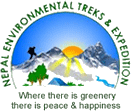
 Search
Search